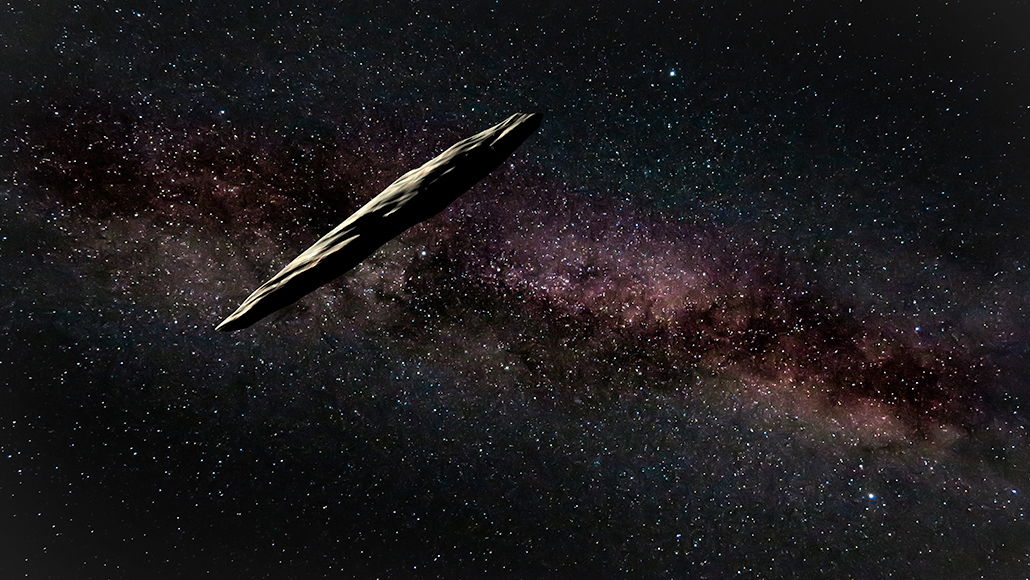
‘Oumuamua (illustrated), an enigmatic celestial body that passed through the solar system in 2017, might have been a piece of a shredded planet, a new study suggests.
Joy Pollard/Gemini Observatory, AURA, NSF

‘Oumuamua (illustrated), an enigmatic celestial body that passed through the solar system in 2017, might have been a piece of a shredded planet, a new study suggests.
Joy Pollard/Gemini Observatory, AURA, NSF